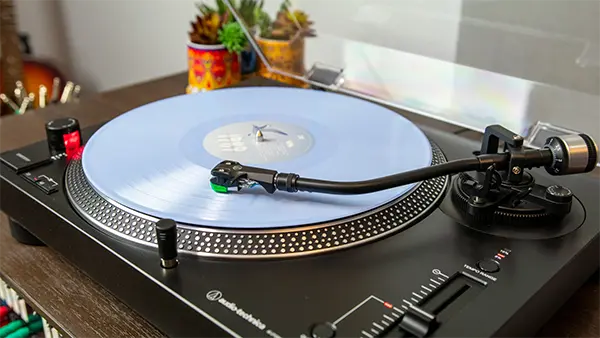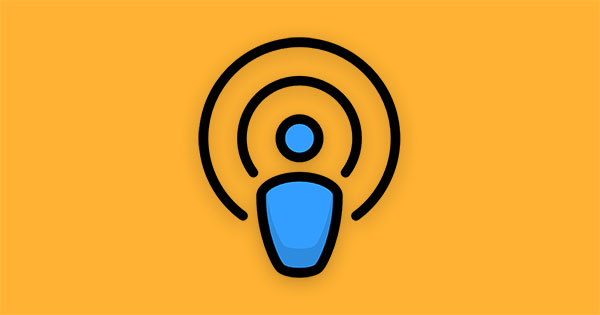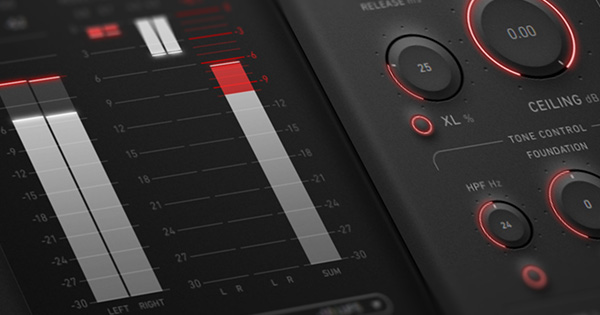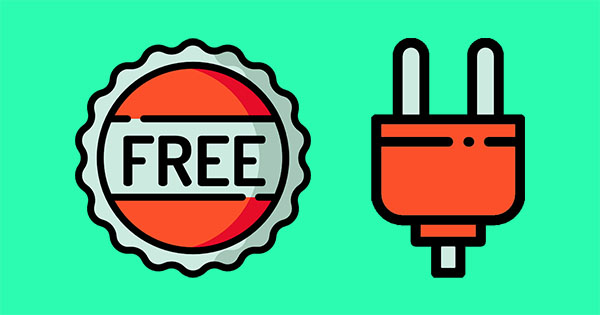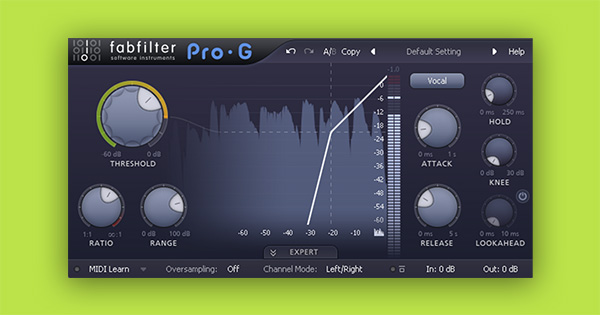[ad_1]
Learn how to sample vinyl records, where to download royalty-free samples that you can use in your music, and how to chop and manipulate samples.
Sampling music is an exciting way to create something new out of existing sounds. This blog will teach you how to sample vinyl records and turn them into fresh beats. You’ll learn where to find samples online that you can use in your music. Plus, you’ll discover how to cut samples to make them fit perfectly in your tracks.
What is Audio Sampling?
Audio sampling is the process of taking an existing audio recording and using it in a new song. An audio sample might contain an instrument playing a melody or chord progression. Sometimes, a sample contains dialog, vocals, a drum beat, or FX. Samples that are ripped from a vinyl record will often contain a combination of sounds.
You can use samples in the state that you acquire them, but many producers manipulate them to fit their vision. This may involve chopping, pitch shifting, time stretching, or reversing samples. We’ll take a deeper look at these techniques later in this post, but the extent to which you decide to alter a sample is up to you.
How to Sample Vinyl
Many turntables produced after the mid-2000s include a USB cable that allows you to connect them directly to your computer. Within your digital audio workstation (DAW), you can select the turntable as an audio source and record the signal it produces directly to an audio track. At that point, you’re able to chop and manipulate the recording in various ways.

In the past, you needed an audio interface to connect a turntable to your computer. An audio interface converts the analog signal produced by turntables and other devices, like microphones, into a digital signal that your computer can process.
If you own a turntable without a USB cable, you’ll connect the left and right RCA cables to the RCA inputs on your audio interface. Most audio interfaces don’t provide RCA inputs, so you’ll need to get RCA to 1/4″ adapters to make the connection.

Check out this turntable buyers guide for my top turntable recommendations. Assuming you own an old turntable without a USB connection, my budget-friendly audio interface recommendation is the Scarlett 2i2. For the price, it delivers incredible value and has many applications beyond sampling records.

Is Sampling from Vinyl Legal?
Sampling vinyl records is a lot of fun but can be a headache when you start thinking about legal clearance. In most cases, you can’t include someone else’s audio recordings in your music without getting their permission. For example, if you want to sample a Beatles record in your song, you’ll need to contact their management team or record label and request approval.
After going through the process of finding the right person to request approval from, a few different things might happen. The original rights holder might not respond to your clearance requests, especially if you’re a small artist. They might respond by saying that you can use the sample for free (best case scenario), that you need to pay a fee (one-time payment or ongoing royalty payments), or they’ll outright say, “No, you can’t use the sample.”
What Are Royalty-Free Samples?
Without proper clearance, your music cannot be uploaded to streaming services, and record labels will likely reject your submissions. A simple solution is to use royalty-free samples, which are audio clips you can include in your music without ongoing royalty payments to the original rights holder. For example, when you upload a song containing royalty-free samples to streaming services, you’re not required to share the royalties you make with the person who made the samples.
Royalty-free samples are sometimes free to use, but you typically need to pay a small fee to access them. Once you’ve been provided with the appropriate license, you can use the samples in any song that you produce. Using royalty-free samples is also a great way to avoid accidental copyright infringement. In the past, unknowing producers sampled existing songs, did not get the proper clearance, and then got sued.
One of the most famous copyright infringement cases involves The Verve. They were sued by the Rolling Stones’ rights holders for using a sample from an orchestral recording of “The Last Time” by the Rolling Stones.
The Verve initially had a license to use the sample but were sued for using more than what was agreed upon. As a result, they lost all royalties and songwriting credits for “Bitter Sweet Symphony.” For a song with over 940 million plays on Spotify and 970 million views on YouTube, that’s a lot of missed revenue.
Do Royalty-Free Samples Need to Be Cleared?
The Verve failed to abide by their licensing agreement’s restrictions, which had serious consequences. However, license restrictions for royalty-free samples that you find online tend to be pretty straightforward. They typically prevent you from reselling or distributing the raw samples you purchase, but you’re allowed to sell and distribute the songs they’re in. Royalty-free samples are pre-cleared, so you can use them in your music without worrying about someone suing you.
Where Do You Download Royalty-Free Samples?
Splice provides a massive library of royalty-free audio samples that you can use in your music. You pay a small monthly fee, and you’re provided a number of credits to spend on samples. The best part about this is that you don’t need to download entire sample packs. You can browse through packs using the Splice desktop app, download just the samples you want to use, and drag them directly into your DAW.

Plans start at $12.99/month, scaling up in price depending on how many monthly credits you want. If you already own a handful of go-to sample packs, the 100 credits provided with the $12.99 plan should be enough to get you through each month. The great thing about Splice is that if you don’t use all your credits, they roll over into the next month and build up over time.
There are also places where you can find free royalty-free samples online, like free-sample-packs.com. In comparison to Splice, free sample websites don’t provide nearly the same level of search functionality, categorization, or tagging. As a result, they make finding the samples you’re looking for a lot more challenging. However, it might be worth hunting down a few large sample packs through a free website to get your sample library started and then transition to Splice down the road.
How to Chop Samples Using a Sampler
Once you’ve found a sample you want to work with, you can use your DAW’s stock sampler to chop it up and manipulate it. Ableton is my DAW of choice, so here are some different ways that I like to reshape samples using Ableton’s Sampler:
- Chopping: This involves cutting a sample into smaller pieces or segments. These chopped segments can be rearranged, looped, or triggered individually to create new rhythms, melodies, or textures. It’s a fundamental technique in genres like hip-hop and electronic music.
- Pitch Shifting: This technique changes the pitch of a sample without altering its tempo. It’s useful for tuning a sample to fit the key of your track or for creative effects, like creating a deep bass sound from a vocal sample.
- Time Stretching: This refers to altering the duration of a sample without changing its pitch. It’s especially useful for matching the tempo of a sample to your project’s BPM or for creating slow-motion or sped-up effects.
- Reversing: Reversing a sample can create unique and often unexpected sounds. It’s great for crafting atmospheric backdrops and transitions or adding a sense of mystery or intrigue to a track.
If you’re using a different DAW, you can still apply these techniques. For example, FL Studio has Fruity Sampler, Pro Tools has Structure Free (part of the AIR virtual instrument range), and Logic Pro has EXS24. In case your DAW doesn’t include a sampler, you can download a free third-party sampler plugin like the TX16Wx Software Sampler; it’s quite powerful and packed with features.

If you’re looking for a hardware sampler, check out Native Instruments’ Maschine. It’s a hardware drum machine and sampler that allows you to create, perform, and record arrangements using samples. At a basic level, you load samples onto each drum pad and hit the pads with your fingers to play the samples. In this sense, it behaves like a musical instrument. The samples can either be pulled from vinyl, Splice, or Native Instruments’ massive 8 GB sample library that’s included with Maschine. Maschine includes a standalone DAW that allows you to create and arrange beats. Although, you can also connect to the hardware using the Maschine plugin in your DAW of choice.
How to Chop Samples Without a Sampler
It’s not necessary to use a sampler to chop samples. Many music producers prefer to chop, rearrange, and manipulate audio samples directly on their audio tracks. Within each audio clip’s settings, they’ll adjust the pitch, timing, and playback direction.

Editing samples on an audio track provides simplicity and speed. Loading samples into a sampler has some creative benefits — such as volume envelope shaping and the ability to apply filters — but when you’re trying to work quickly and get your ideas out, it can be a hinderance. Experiment with both methods to determine which approach fits your workflow the best.
How to Add Vinyl Character to Digital Samples
Vinyl records tend to contain certain characteristics that digital samples downloaded from Splice do not. In vinyl samples, you’ll often hear surface noise, pops, and crackles, especially if the record is dirty or scratched. These characteristics can be quite desirable, adding a sense of authenticity or nostalgia to your music.
iZotope’s free Vinyl plugin makes it easy to infuse samples downloaded from Splice with the traits of a vinyl record. This plugin allows you to emulate a record player from different decades, ranging from the 1930s to the 2000s. You can adjust the level of mechanical noise and electrical noise, in addition to the amount of dust and number of scratches. A built-in Lo-fi effect allows you to apply the saturated, worn timbre of late-80s hip-hop to your samples as well.

Splice, combined with iZotope’s Vinyl plugin, delivers the best of both worlds. You can access a massive library of royalty-free samples that you don’t need to worry about clearing and make all of them sound like they were ripped from a vinyl record.
Where to Go From Here
Getting samples into your DAW is just the first step. You still need to arrange them into a song, which requires a basic understanding of music theory. After that, you’ll want to mix your song so that all the individual audio tracks sound cohesive. Finally, you need to master your song, which involves formatting it properly and optimizing its playback for streaming services. It’s an entire process that can take years to master, but I’ve got a shortcut that will shrink this journey into less than 10 hours.
My Music Production for Beginners course teaches you how to write, record, mix, and master music at home. No experience required. By the end of the course, you’ll have produced three songs from start to finish. And guess what? The first song that you produce is a hip-hop beat using audio samples!
Everything you need to know is handed to you on a silver platter. Enroll now to start producing the music that you’ve always wanted to create.
[ad_2]
Source link
